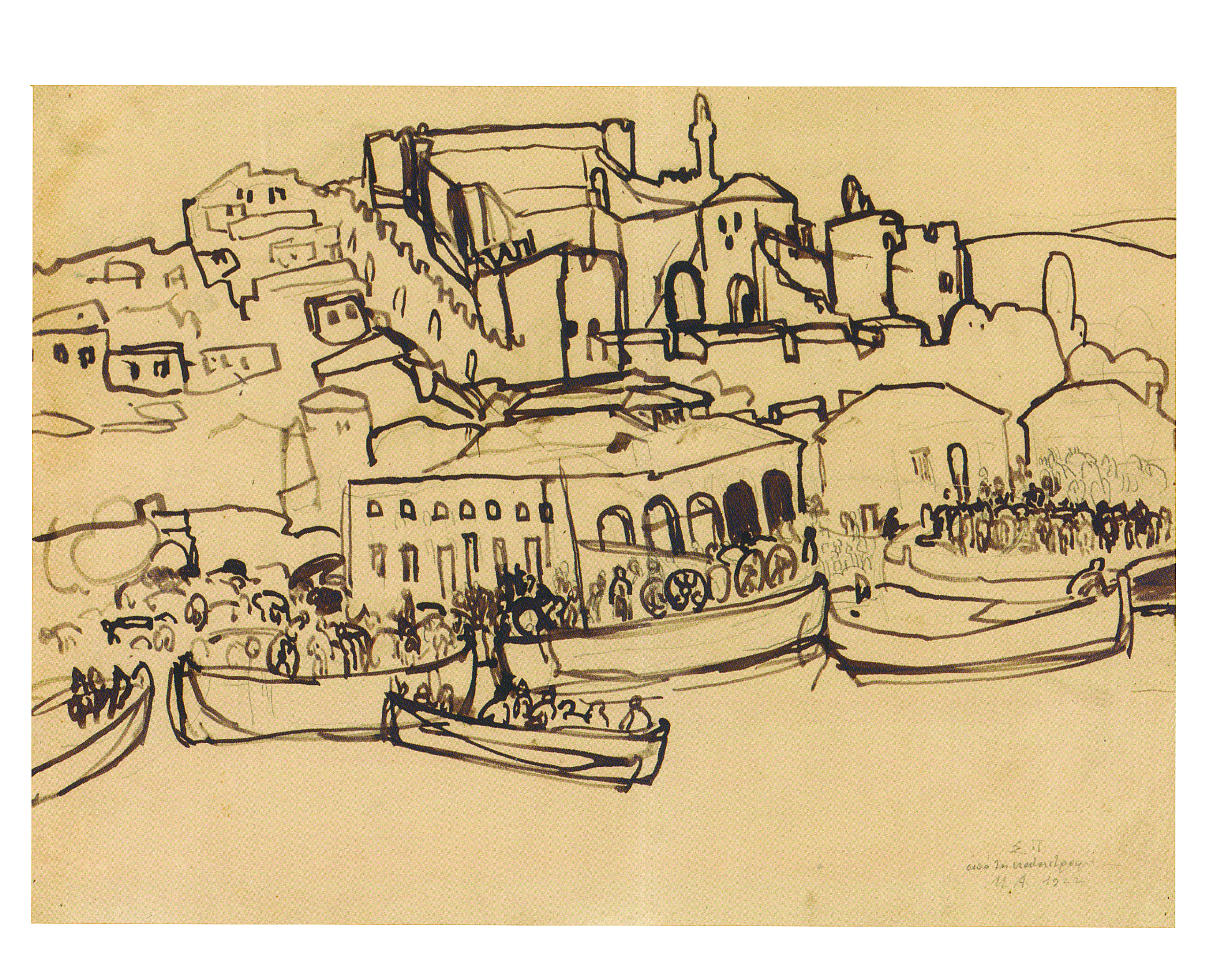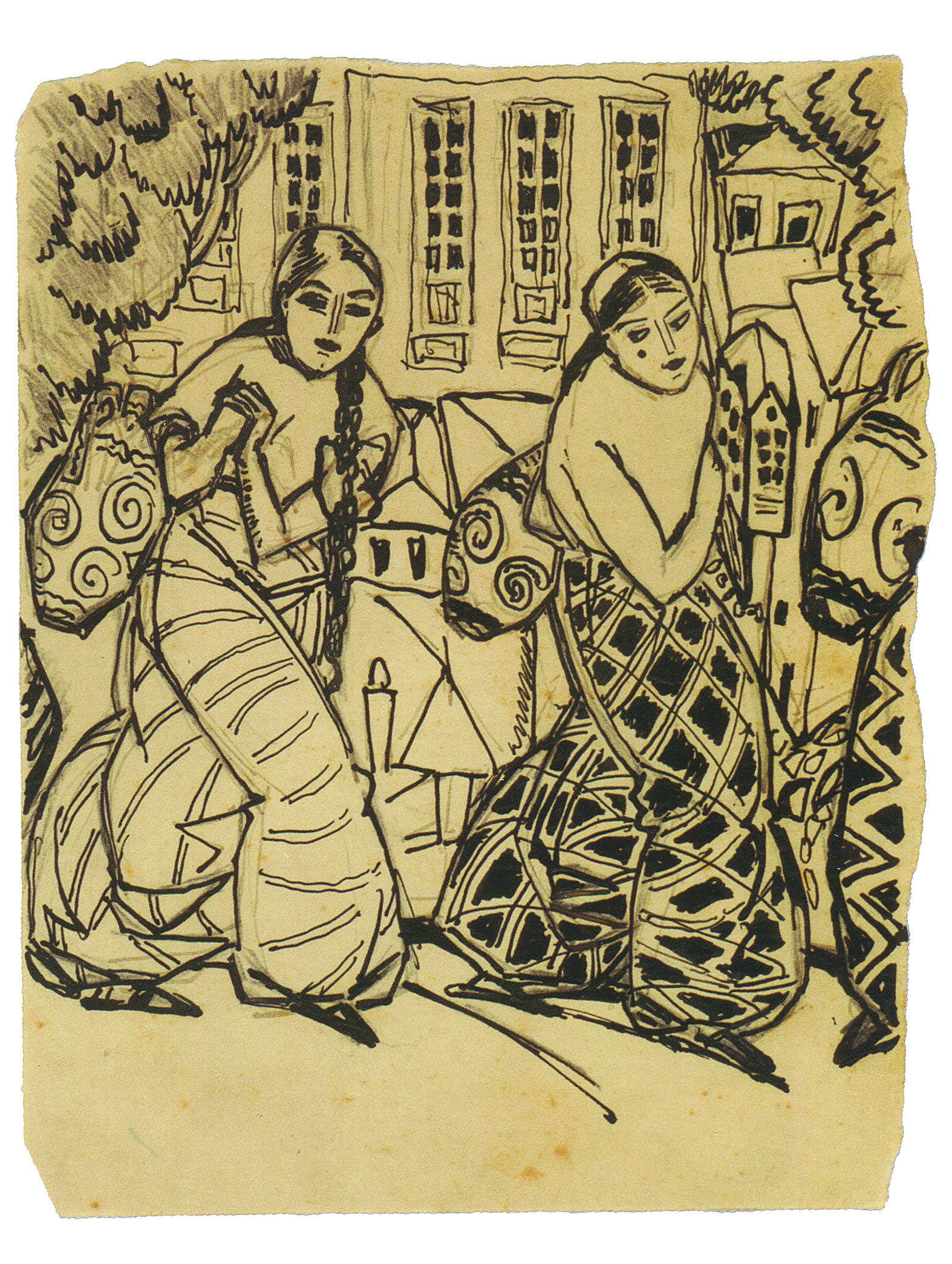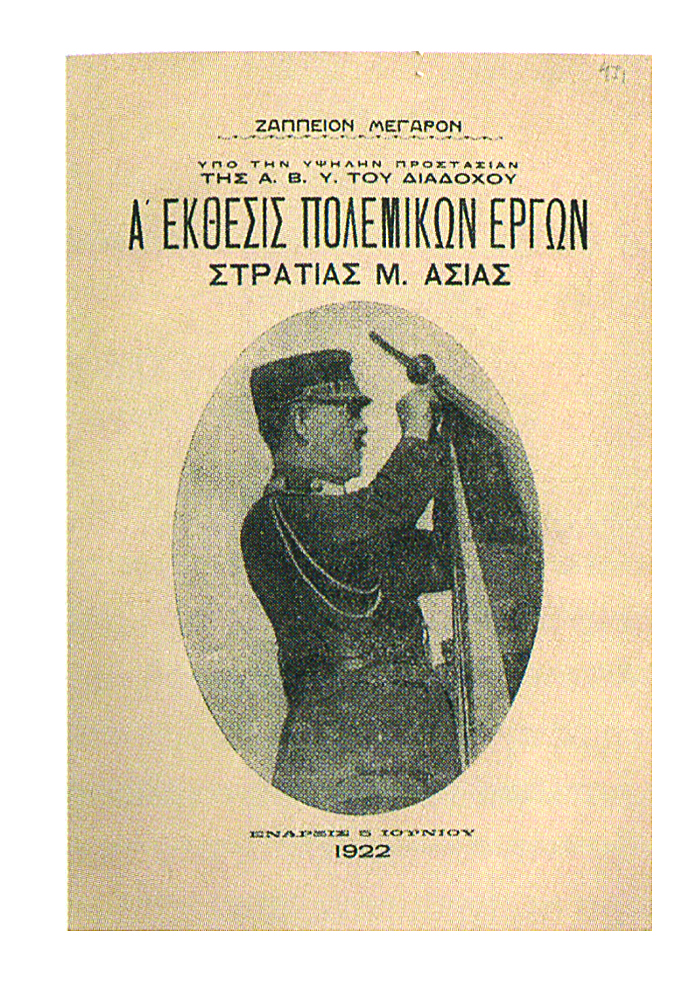
“The loss of his works in Asia Minor was a great mourning for him,” says Kristina Tsagalia, curator of the Telloglio Arts Foundation of AUTH collections. This refers to the artist Spyros Papaloukas and an incident in his life that is deeply traumatic by today’s standards. But his trauma, the destruction of most of the months-long, painstaking, exquisite artistic work with which he recorded his experiences on the land of Asia Minor, is connected with a major national catastrophe – a fire in Smyrna – and collective mourning for the destruction of the city and the expulsion of Asia Minor. As for the painter himself, he again became an eyewitness to historical events, this time not of his own free will.
It was about a year earlier, in 1921, when Spyros Papaloukas, who had studied painting in Paris, decided to stop his studies and enlist in the military, according to his close friend Stratis Doukas. At the same time, the administration of the Ministry of Defense decided to send painters to the front to document operations with their work – the business trip of Georgios Procopius preceded a year earlier. Three nearly the same age who were in their thirties at the time were chosen: Papaloukas, Pavlos Rodokanakis, and Periklis Byzantios. All of them went to the East to see life at the front and create projects that would help raise the morale of the country.
In June 1922, the “1st Exhibition of Military Works of the Asia Minor Army – Under the Patronage of the Crown Prince” was organized in Zappeion. The press reviews of the three artists were enthusiastic – with an emphasis on Papaloukas. The reaction of the public was also very warm, writes Efemeris Balkanion. However, the exhibition had a very short duration and may have been terminated prematurely, as stated in the excellent Telloglios publication accompanying the exhibition Spyros Papaloukas. 1922 onwards.” (Thessaloniki, 2012) – due to the conflict between the Ministry of Defense and the army. However, it was decided to move it to Smyrna, apparently to revive its inhabitants, while the work was accompanied by three painters.

Meanwhile, the Asia Minor front was collapsing, and the end was clearly near. On September 9 (according to the new style), the city was occupied by the Turkish army. The great fire that followed burned for four days. Papaloukas drew in ink and pencil on paper images of the devastation: smoke rising from the rooftops, a harbor full of people, boats crowded with women and children trying to reach the ships. There, among the horror and abandonment, the works of painters disappeared, and no one still knows the exact number of those destroyed. As Papaloukas later reported in the press (Efim. Balkanion), about 500 works were burned out of almost twice as much as he created in his military campaign that led him to Eski-Shekhir.
According to Papaloukas, about 500 works were burned out of almost twice the amount he created during the military campaign against Eski-Sehir.
And yet, something remains of Papaloukas’ work from that period: several watercolor paintings that may not have been selected for the exhibition, and several sketches that could have been drafts, i.e. basis for the final paintings. Even this limited material – precious and difficult to access, as commented to “K” by the former director of the National Gallery, Maria Mikhailidou, who personally dealt with this issue with the help of the artist’s daughter Minas, – proves the greatness of the artist.
“The surviving fragments show the quality of the work and are intertwined with her temperament and character,” says Ms. Mihailidou. “Papaloukas followed the march of the army, and all the light that he found in the East dissolved the colors in his painting, saturated with watercolors of Asia Minor landscapes. But since he was also a great designer, with his sketches he gives us images not only of military life or army pictures, but also scenes from the daily lives of people he met and fell in love with.

The work that we can see today belongs to private and public collections, and a small sample is included in the exhibition “Asia Minor: Radiance; Eradication; Destruction; Creation”, which will be presented by the Benaki Museum and the Center for the Study of Asia Minor. dated September 15 – has a special historical as well as artistic value, as it functions as a record of the events of a certain period. The works are distinguished by their impetuous design, giving them a springy expressionist character, while the rough outlines of the figures and the stylization of the figures refer to the work of Emile Bonnard, notes the MIET publication (2019) Spyros Papaloukas. . Plans and research”.

The return of the artist to Greece from Smyrna was marked by little things, Ms. Mikhailidou comments in the publication of the catalog of the exhibition “S. Papaloukas. 1922 onwards.” He permanently settled in the country after he was also denied a continuation of a scholarship in Paris, contacted avant-garde art and intellectual circles, created works from the Aegina period, and finally left with Stratis Doukas for Athos, a trip that ended in a catalytic influence on the development of art . There he studied Byzantine art and iconography, effectively starting a new period in his artistic work. He presented the works of Aegina and Mount Athos at his first solo exhibition, held in Thessaloniki, at the cafe Lefkos Pyrgos, opening a new era of artistic activity in the city.
Source: Kathimerini
James Springer is a renowned author and opinion writer, known for his bold and thought-provoking articles on a wide range of topics. He currently works as a writer at 247 news reel, where he uses his unique voice and sharp wit to offer fresh perspectives on current events. His articles are widely read and shared and has earned him a reputation as a talented and insightful writer.